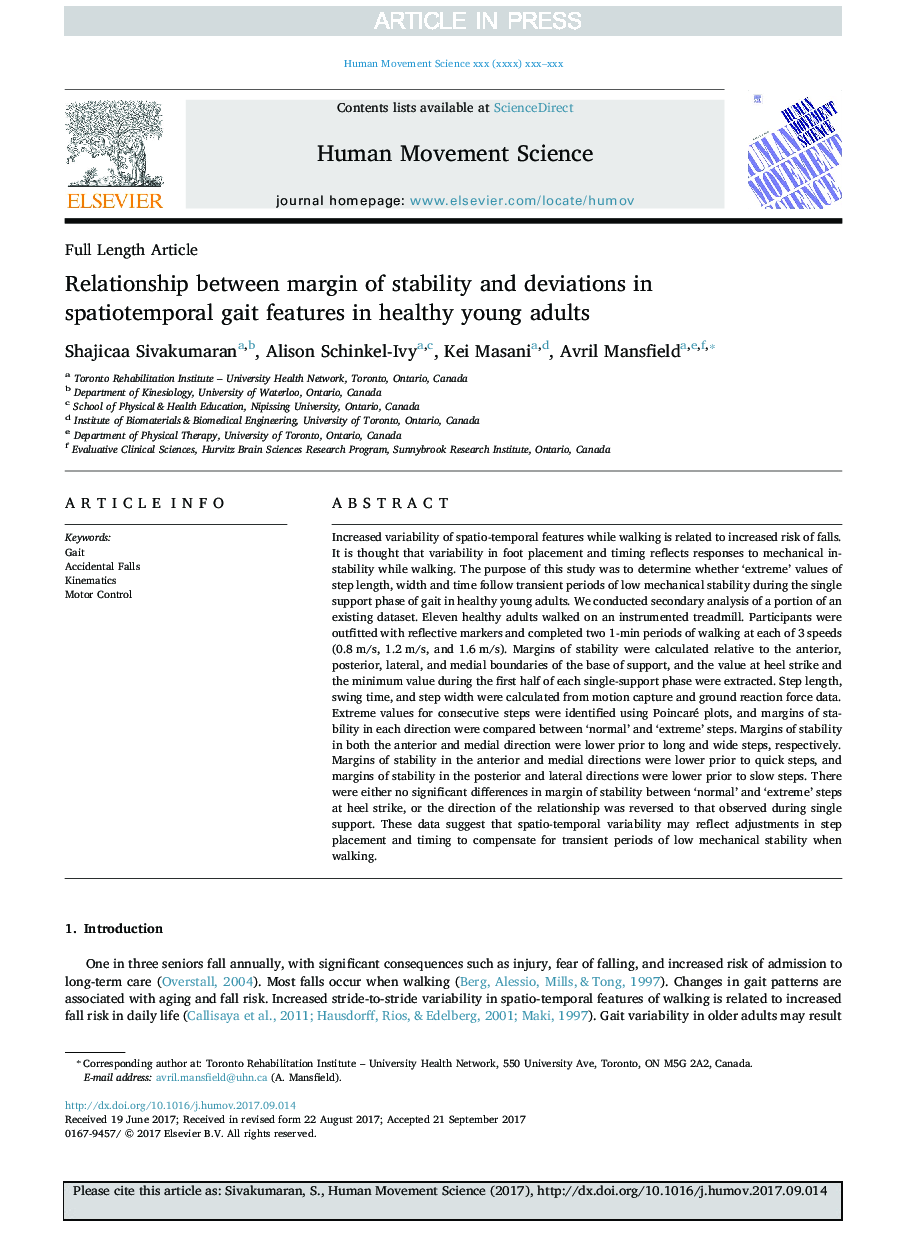| کد مقاله | کد نشریه | سال انتشار | مقاله انگلیسی | نسخه تمام متن |
|---|---|---|---|---|
| 7291067 | 1474207 | 2018 | 8 صفحه PDF | دانلود رایگان |
عنوان انگلیسی مقاله ISI
Relationship between margin of stability and deviations in spatiotemporal gait features in healthy young adults
ترجمه فارسی عنوان
رابطه بین حاشیه ثبات و انحرافات در ویژگی های قدمت زمانی و زمانی در بزرگسالان جوان سالم
دانلود مقاله + سفارش ترجمه
دانلود مقاله ISI انگلیسی
رایگان برای ایرانیان
کلمات کلیدی
موضوعات مرتبط
علوم زیستی و بیوفناوری
علم عصب شناسی
علوم اعصاب شناختی
چکیده انگلیسی
Increased variability of spatio-temporal features while walking is related to increased risk of falls. It is thought that variability in foot placement and timing reflects responses to mechanical instability while walking. The purpose of this study was to determine whether 'extreme' values of step length, width and time follow transient periods of low mechanical stability during the single support phase of gait in healthy young adults. We conducted secondary analysis of a portion of an existing dataset. Eleven healthy adults walked on an instrumented treadmill. Participants were outfitted with reflective markers and completed two 1-min periods of walking at each of 3 speeds (0.8Â m/s, 1.2Â m/s, and 1.6Â m/s). Margins of stability were calculated relative to the anterior, posterior, lateral, and medial boundaries of the base of support, and the value at heel strike and the minimum value during the first half of each single-support phase were extracted. Step length, swing time, and step width were calculated from motion capture and ground reaction force data. Extreme values for consecutive steps were identified using Poincaré plots, and margins of stability in each direction were compared between 'normal' and 'extreme' steps. Margins of stability in both the anterior and medial direction were lower prior to long and wide steps, respectively. Margins of stability in the anterior and medial directions were lower prior to quick steps, and margins of stability in the posterior and lateral directions were lower prior to slow steps. There were either no significant differences in margin of stability between 'normal' and 'extreme' steps at heel strike, or the direction of the relationship was reversed to that observed during single support. These data suggest that spatio-temporal variability may reflect adjustments in step placement and timing to compensate for transient periods of low mechanical stability when walking.
ناشر
Database: Elsevier - ScienceDirect (ساینس دایرکت)
Journal: Human Movement Science - Volume 57, February 2018, Pages 366-373
Journal: Human Movement Science - Volume 57, February 2018, Pages 366-373
نویسندگان
Shajicaa Sivakumaran, Alison Schinkel-Ivy, Kei Masani, Avril Mansfield,
